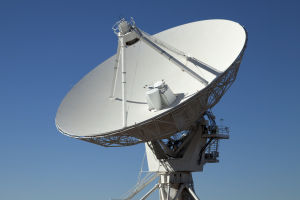Communication satellites dominate in terms of quantity among the many application satellites.
They are one of the earliest and most extensively utilized types of satellites globally, specifically designed to relay wireless radio signals. When communication satellites are combined with satellite ground stations, they enable telephone communication and television broadcasting.
Communication satellites serve as "middlemen" in space, akin to mirrors suspended in orbit. They efficiently relay wireless radio signals sent from ground stations, facilitating various tasks such as telephony, data transmission, facsimile transmission, and television broadcasting between two ground stations.
For instance, if we were to communicate between Shanghai and the distant shores of New York, the process begins with the ground station in Shanghai converting sender information—such as voice, text, or images—into radio signals. These signals undergo processing and power amplification by wireless radio equipment before being transmitted to the satellite via a transmitter.
Upon reception, the satellite's antenna processes and amplifies the signals before redirecting them to the ground station in New York. The New York ground station further amplifies and processes the signals, ultimately restoring them to their original format—voice, text, or imagery—before transmitting them to the recipient, thus completing the communication between the two locations.
A single geostationary communication satellite can cover approximately 40% of the Earth's surface, and a constellation of three geostationary communication satellites, evenly distributed above the equator, can achieve global communication, except for polar regions.
Utilizing communication satellites for communication offers several advantages, including long-distance coverage, large capacity, high quality, reliability, and flexibility.
Since the launch of the first communication satellite in 1962, nearly 700 diverse types of communication satellites have been deployed worldwide. Among them, geostationary communication satellites, positioned in Earth's stationary orbit, play a vital role in international telecommunications and television broadcasting.
Communication satellites orbit the Earth at a speed of 3075 meters per second along this trajectory, rotating from west to east. They complete one orbit around the Earth in 23 hours, 56 minutes, and 4 seconds, coinciding precisely with the Earth's rotation.
Therefore, from the ground, the satellite appears stationary, making the work of ground-receiving stations much more convenient. The station's antenna can be fixedly aligned with the satellite, enabling uninterrupted communication day and night, without the need to track constantly moving satellites.
In recent years, broadcasting satellites have emerged as specialized communication satellites. Previously, receiving television signals from satellites required intermediary ground stations. However, with broadcasting satellites, this step has been eliminated, allowing users to directly receive television programs transmitted from broadcasting satellites using small-diameter antennas.
As technology continues to advance, the field of satellite communication holds promise for further innovation and development. With ongoing advancements, satellite communication systems are poised to become even more efficient, accessible, and versatile, shaping the future of global communication in unprecedented ways.


